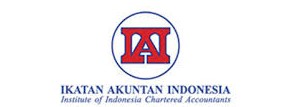Dampak Tata Pemerintahan yang Baik terhadap Kepercayaan Masyarakat Kabupaten Pasaman
Abstract
This research aims to find out how much impact good governance has on the trust of the people of Pasaman district. This research uses legitimacy theory. The population of this study was the people of Pasaman district and data collection was carried out using a questionnaire which was distributed directly to 400 people of Pasaman district who were at least 17 years old, had a minimum of high school education, and people who had had dealings with the government. The research results show that 77.4% of good governance variables can influence public trust variables while the rest are influenced by other variables.
References
Alam, M. M., & Said, J. (2015). Public accountability system: Empirical assessment of public sector of Malaysia. Said, J., Alam, MM, and Aziz, MA, 225-236.
Alessandro, M., Lagomarsino, B. C., Scartascini, C., Streb, J., & Torrealday, J. (2021). Transparency and trust in government. Evidence from a survey experiment. World Development, 138, 105223
Ali, K., & Saputra, A. (2020). Tata Kelola Pemerintahan Desa Terhadap Peningkatan Pelayanan Publik Di Desa Pematang Johar. Warta Dharmawangsa, 14(4), 602-614.
Armstrong, E. (2005). Integrity, transparency and accountability in public administration: Recent trends, regional and international developments and emerging issues. United Nations, Department of Economic and Social Affairs.
Beshi, T. D., & Kaur, R. (2020). Public trust in local government: Explaining the role of good governance practices. Public Organization Review, 20, 337-350.
Blind, P. K. (2007). Building Trust in Government in The Twenty-First Century: Review of Literature and Emerging Issues. In 7th Global Forum on Reinventing Government Building Trust in Government.26-29. UNDESA Vienna.
Bouckaert, G., & Van de Walle, S. (2003).Comparing Measures of Citizen Trust and User Satisfaction as Indicators of ‘Good Governance’: Difficulties in Linking Trust and Satisfaction Indicators.International Review of Administrative Sciences, 69(3), 329-343.
Dharmmesta, B. S. (2005). Kontribusi Involvement dan Trust in a Brand Dalam Membangun Loyalitas Pelanggan.Jurnal Ekonomi dan Bisnis Indonesia, 287-304.
Cheema, G. S. (2010). Building trust in government: An introduction. In G. S. Cheema & P. Vesselin (Eds.), Building trust in government: Innovations in governance reform in Asia. New York: United Nations University Press.
Estrada, L., & Bastida, F. (2020).Effective transparency and institutional trust in Honduran Municipal Governments.Administration & Society, 52(6), 890-926.
Grimmelikhuijsen, S. (2012). Linking transparency, knowledge and citizen trust in government: An experiment. International Review of Administrative Sciences, 78(1), 50-73.
Grimmelikhuijsen, S., Porumbescu, G., & Tobin, H. B. I. (2013). The effect of transparency on Trust in Government: A cross-National Comparative Experiment. Public Administration Review, 73(4), 575–586. https://doi.org/10.1111/puar.12047.
Hasthoro, H. A., & Sunardi, S. (2016). Tata Kelola Publik Dan Kinerja Keuangan Pemerintah Daerah Di Indonesia. Jurnal Ekonomi dan Bisnis, 19(1), 53-68
Kathi, P. C., & Cooper, T. L. (2005). Democratizing The Administrative State: Connecting Neighborhood Councils and City Agencies. Public Administration Review, 65(5), 559-567.
Kim, P. S. (2010). Building Trust by Improving Governance: Searching for a Feasible Way for Developing Countries. Public Administration Quarterly, 34(3), 271-299
Mansoor, M. (2021). Citizens' trust in government as a function of good governance and government agency's provision of quality information on social media during COVID-19. Government information quarterly, 38(4), 101597.
Mayer, R. C., Davis, J. H., & Schoorman, F. D. (1995).An Integrative Model of Organizational Trust.Academy of Management Review, 20(3), 709-734.
Mishra, S. S., & Momin, M. M. (2020). Is citizens’ trust escalating the effect of sound governance on citizens’ satisfaction in Ethiopia?. International Journal of Public Administration, 43(1), 84-93.
Moon, M. J. (2003). Can IT Help Government to Restore Public Trust? Declining Public Trust and Potential Prospects of IT in the Public Sector.In 36th Annual Hawaii International Conference on System Sciences, 2003.Proceedings of the (pp. 8-pp).IEEE.
Nawawi, J. (2012). Membangun kepercayaan dalam mewujudkan good governance.Jurnal Ilmiah Ilmu Pemerintahan, 1(3), 19-29.
Nyhan, Ronald C. (2000). Changing the Paradigm: Trust and Its Role in Public Sector Organizations.American Review of Public Administration, 30(1), 87-109.
OECD, O. (2013). Trust in government, policy effectiveness and the governance agenda. Government at a Glance, 2013.
Park, H., & Blenkinsopp, J. (2011).The Roles of Transparency and Trust in the Relationship between Corruption and Citizen Satisfaction.International Review of Administrative Sciences, 77(2), 254-274.
Porumbescu, G. A. (2015). Using transparency to enhance responsiveness and trust in local government: can it work?.State and Local Government Review, 47(3), 205-213.
Rahaman, M. M. (2009). Parliament and good governance: A Bangladesh perspective. Japanies Journal of Political Science, 9, 39–62.
Ray, B. (1999). Good governance, administrative reform and socio-economic realities: A South Pacific perspective. International Journal of Social Economics, 26, 354–369.
Salminen, A., & Ikola‐Norrbacka, R. (2010). Trust, good governance and unethical actions in Finnish public administration. International journal of public sector management, 23(7), 647-668.
Taufiqi, D., & Ariani, K. R. (2022). The Effect Of Good Governance, Accountability, And Transparency Of Village Funds On Public Trust. Procedia Of Social Sciences And Humanities, 3, 184-191.
Uar, A. (2016). Pengaruh pelaksanaan prinsip-prinsip good governance terhadap kinerja pelayanan publik pada Badan Pertahanan Nasional (Bpn) Kota Ambon.Otoritas: Jurnal Ilmu Pemerintahan, 6(1), 1-11.
Ulisah, S. (2016).Pengaruh Tata Kelola Pemerintahan yang Baik (Good Governance) Terhadap Resistensi Sosial Perubahan Pembangunan oleh Masyarakat.Gema Keadilan, 3(1), 86-95.
Veal, Don-Terry; William I. Sauser, Jr. and Maria T. Folmar (2011) Promoting transparency in local governments. In Cal, Clark and Don-Terry, Veal (eds), Advancing excellence and public trust in government, Rowman and Littlefield Publishers Inc.: New York.
Vigoda‐Gadot, E., & Yuval, F. (2003). Managerial quality, administrative performance and trust in governance revisited: A follow‐up study of causality. International Journal of Public Sector Management, 16(7), 502-522
Walle, S. V., & Six, F. (2014). Trust and Distrust as Distinct Concepts: Why Studying Distrust in Institutions is Important. Journal of Comparative Policy Analysis: Research and Practice, 16(2), 158-174
Warah, M. (2020).Penerapan Prinsip-Prinsip Good Governance Dalam Pelayanan Publik Di Kantor Camat Bandar Dua Kabupaten Pidie Jaya.Skripsi, Universitas Islam negeri Ar-Rainry Darussalam Banda Aceh.
Widjajanti, K., & Sugiyanto, E. K. (2017).Gaya Kepemimpinan dan Good Governance Sebagai Upaya Peningkatan Excellent Service Dan Kepercayaan Masyarakat (Studi Kasus Dinperindag Jawa Tengah).Jurnal Dinamika Sosial Budaya, 17(2), 270-284.
World Bank.(1992). Governance and Development.World Bank.
Yang, K., & Pandey, Sanjay K. (2007). Public responsiveness of government organizations: Testing a preliminary model. Public Performance and Management Review. https://doi.org/10.2753/PMR1530- 9576310204.
Yousaf, M., Ihsan, F., & Ellahi, A. (2016).Exploring the impact of good governance on citizens' trust in Pakistan.Government Information Quarterly, 33(1), 200-209.







.png)
.png)
